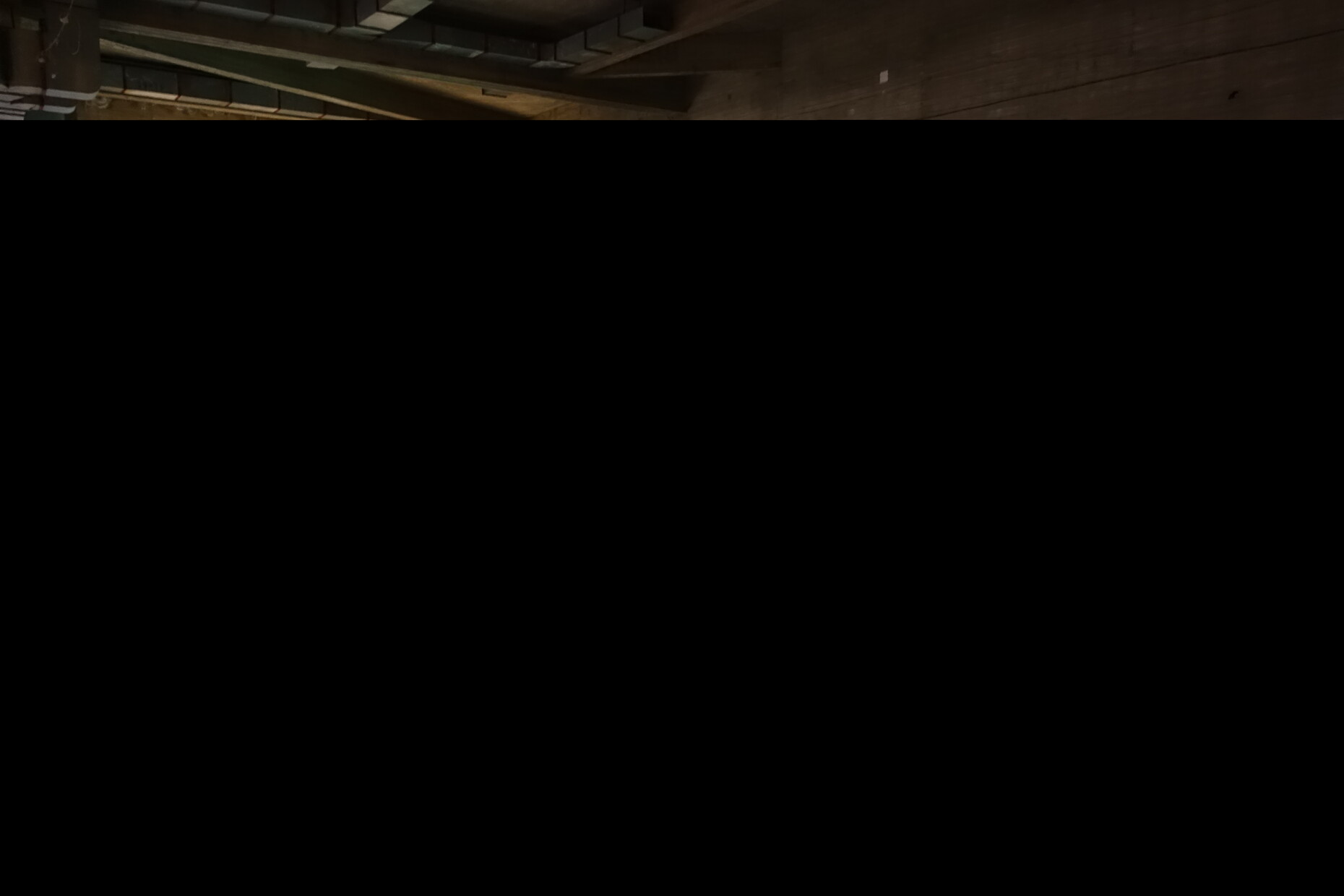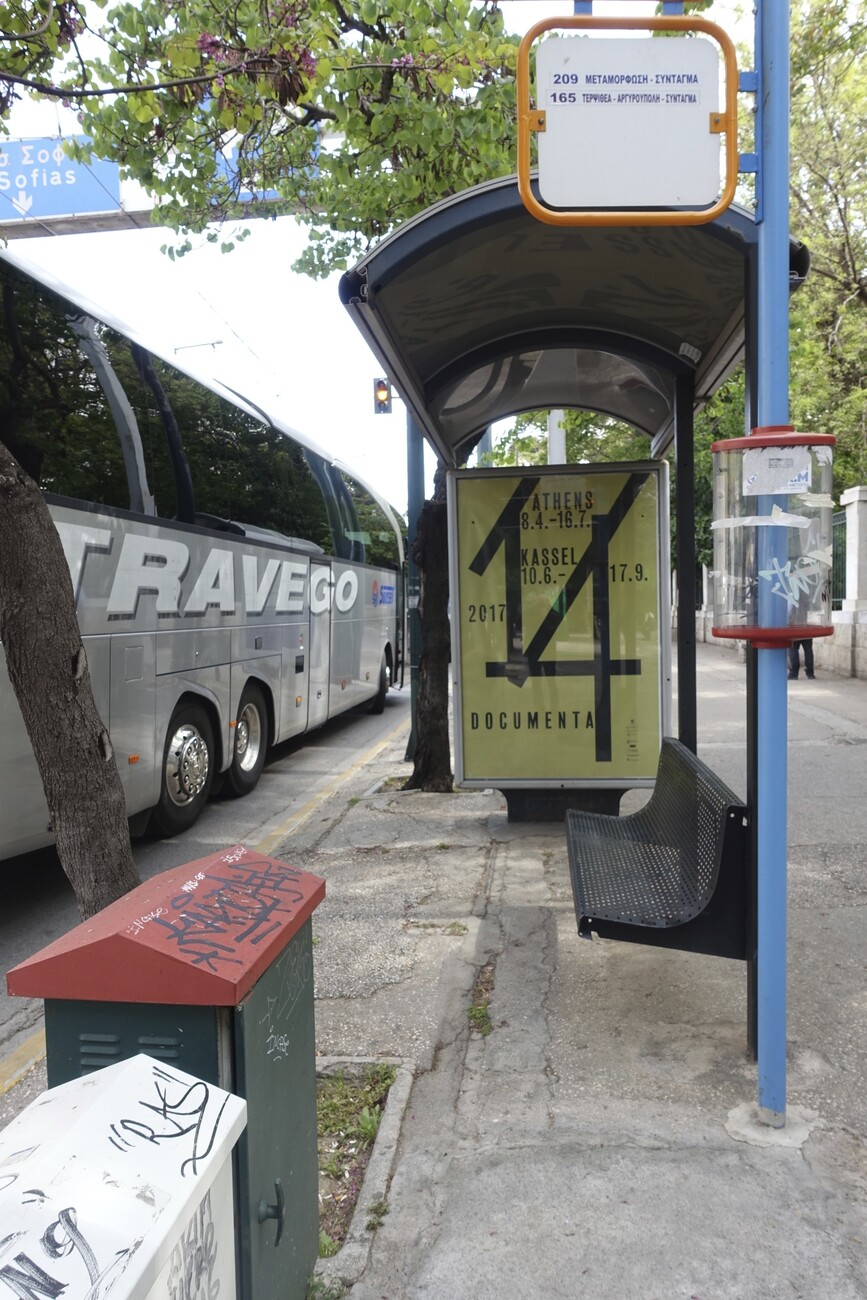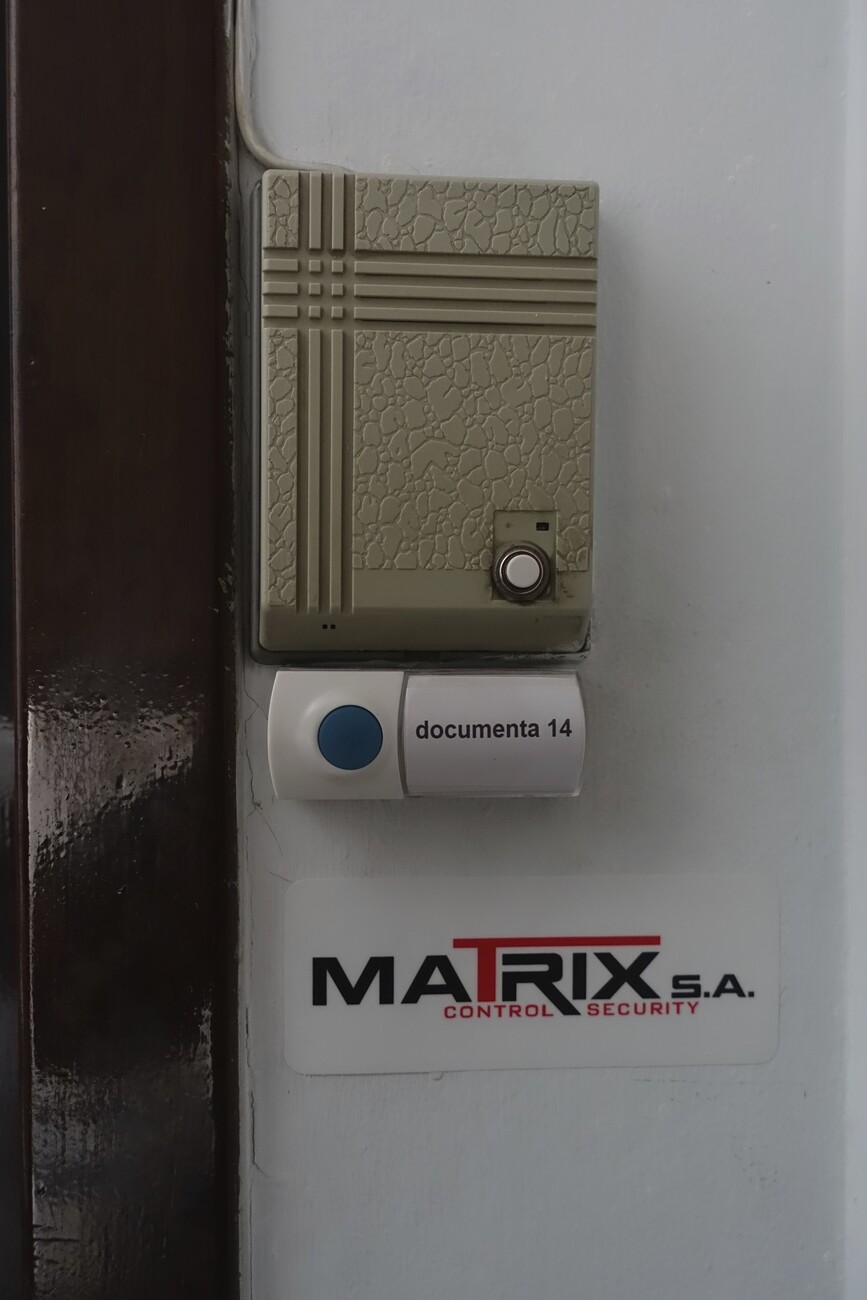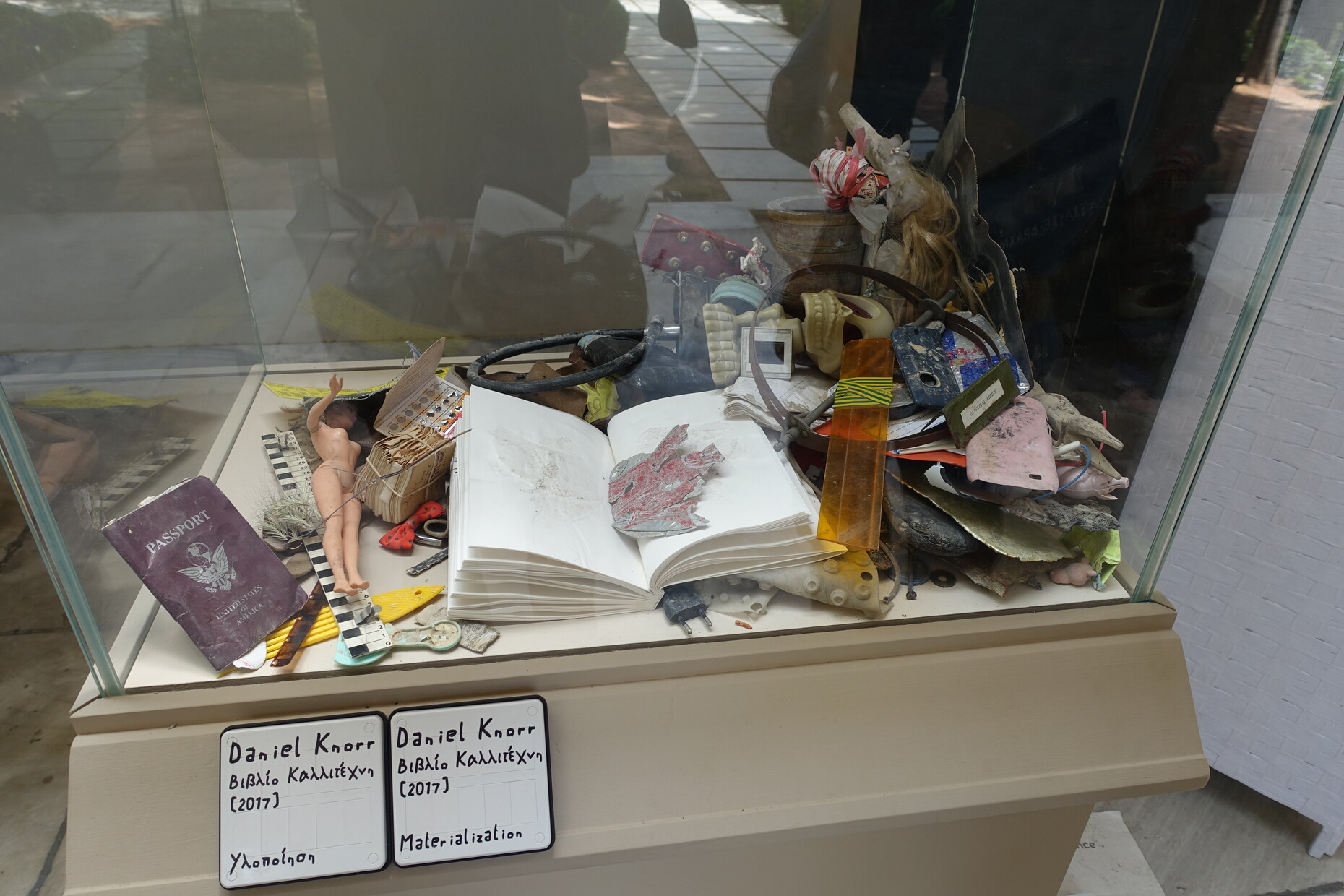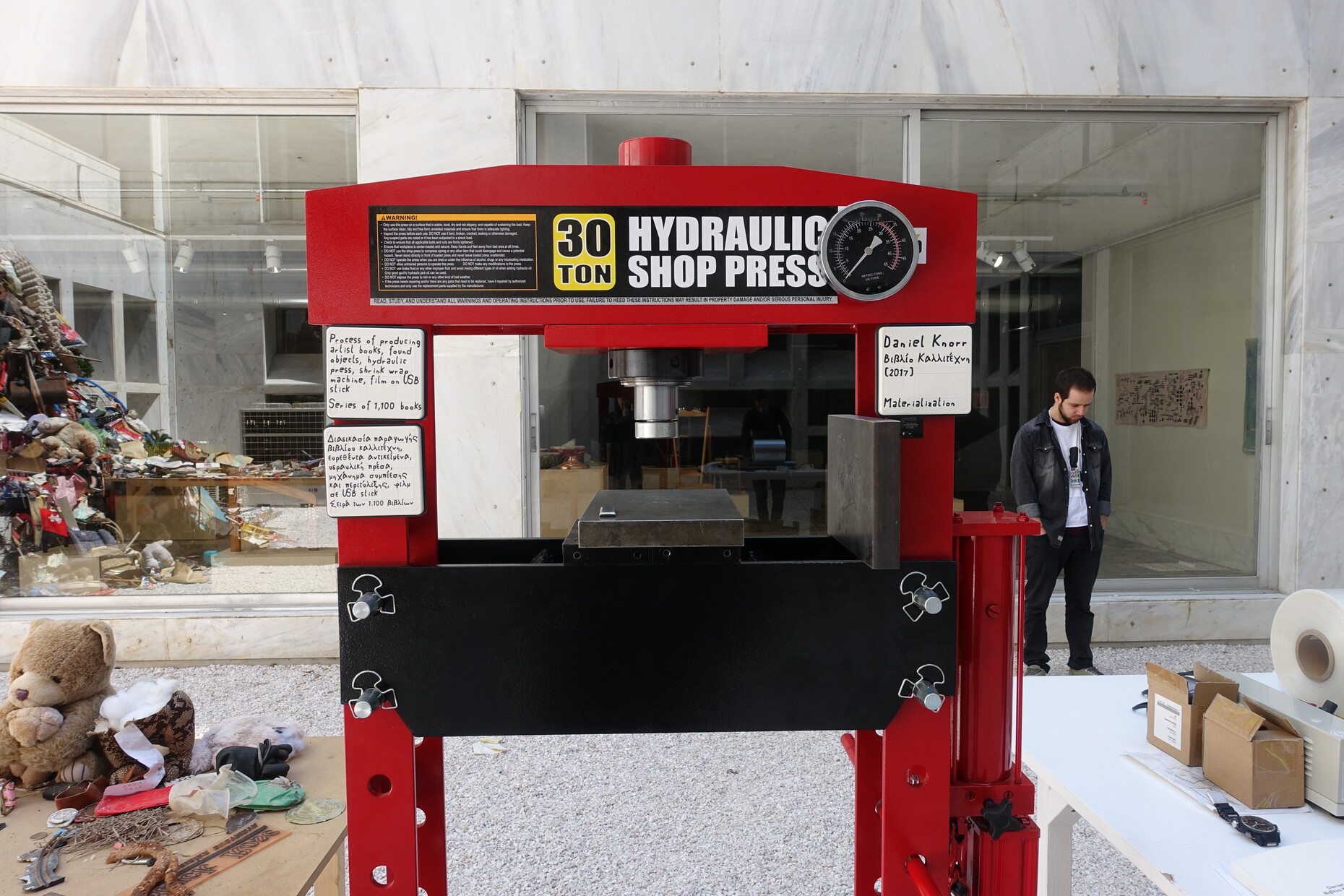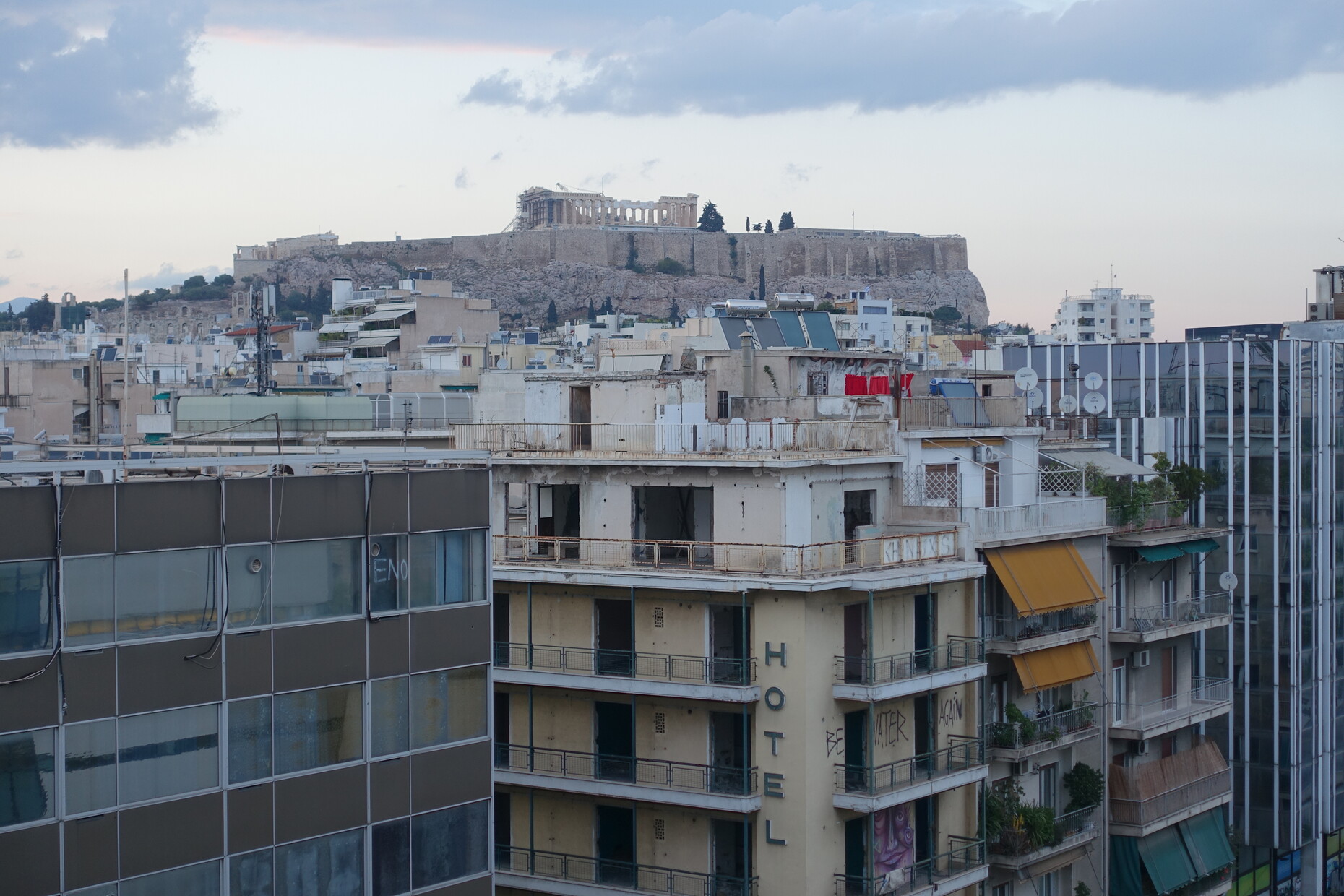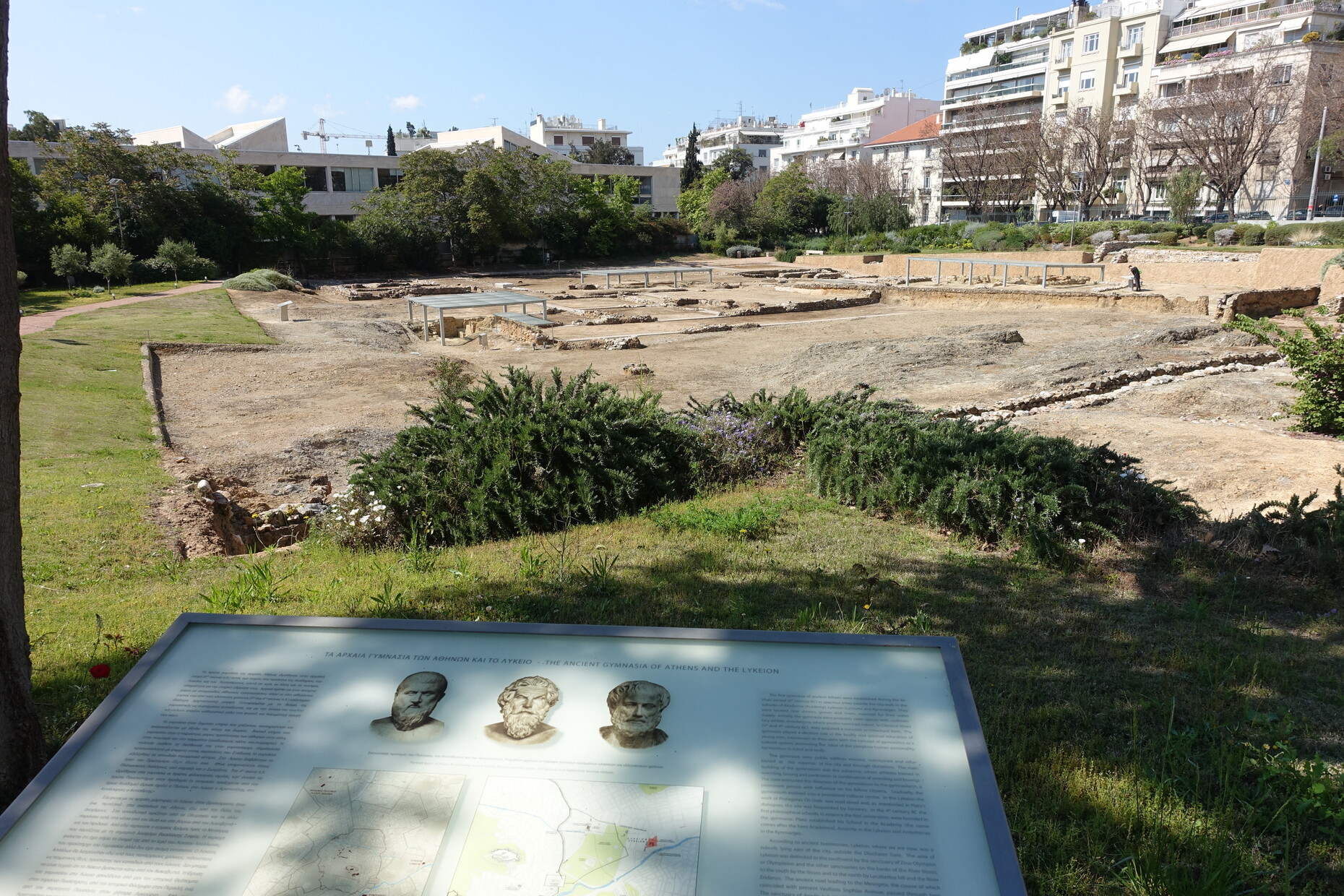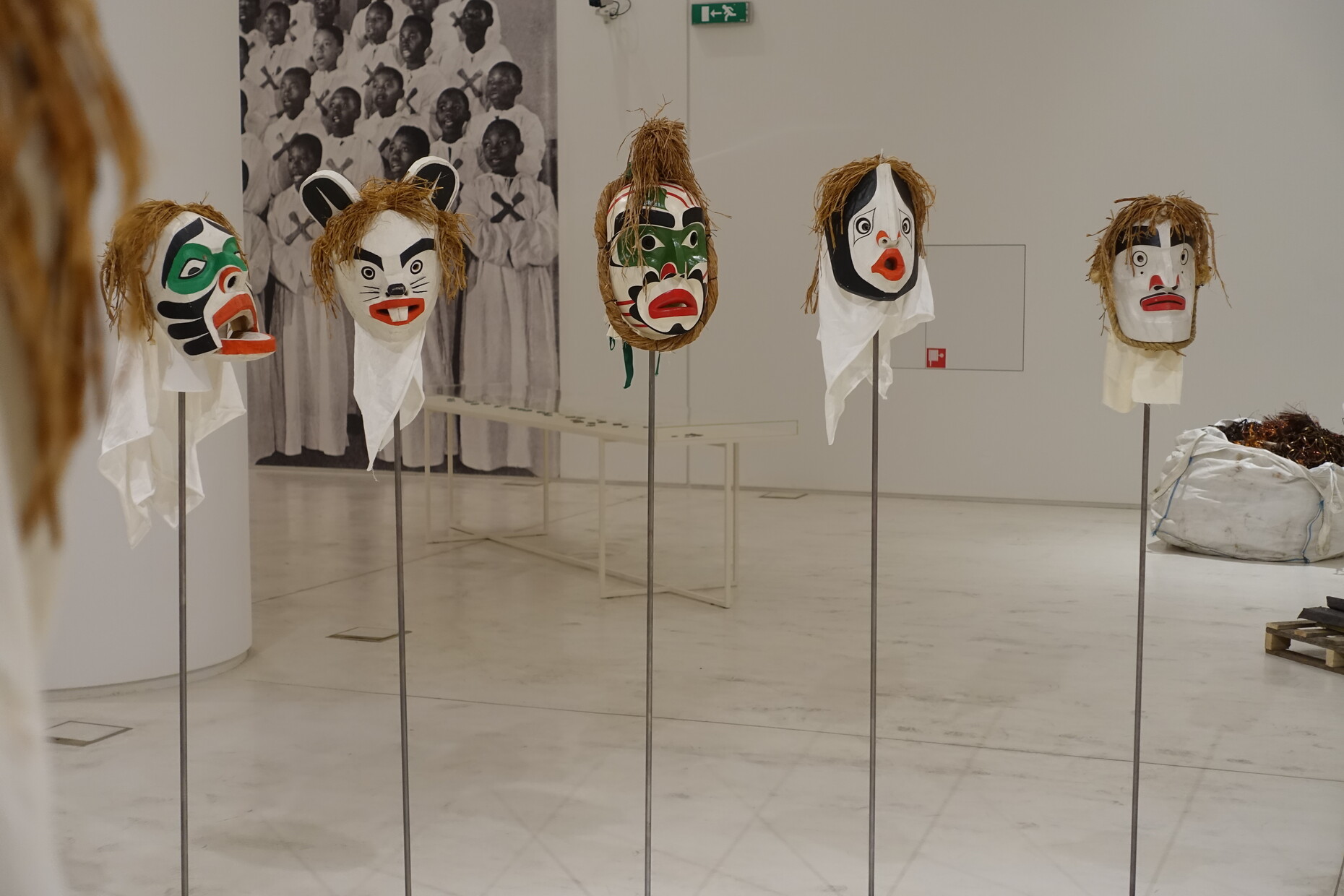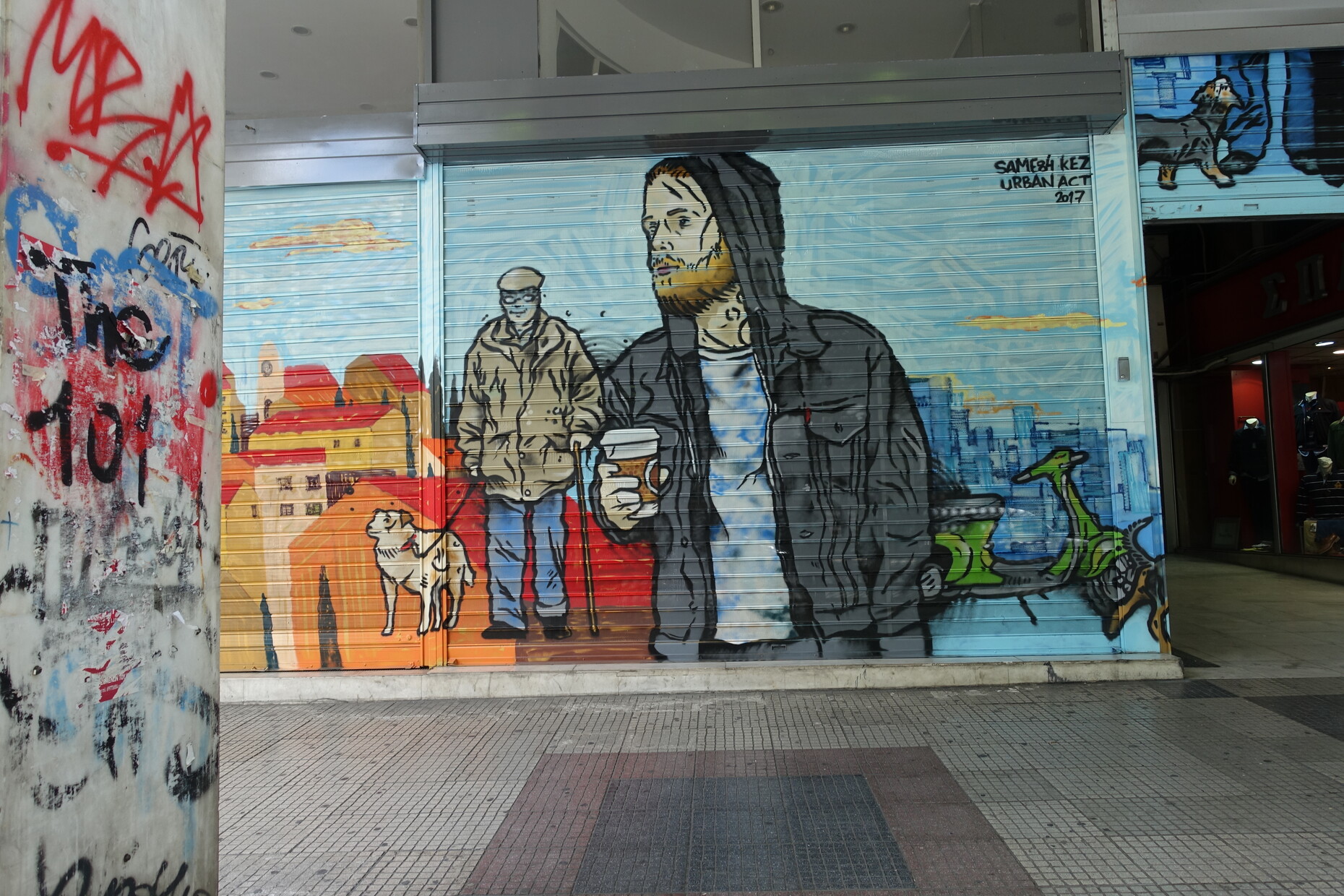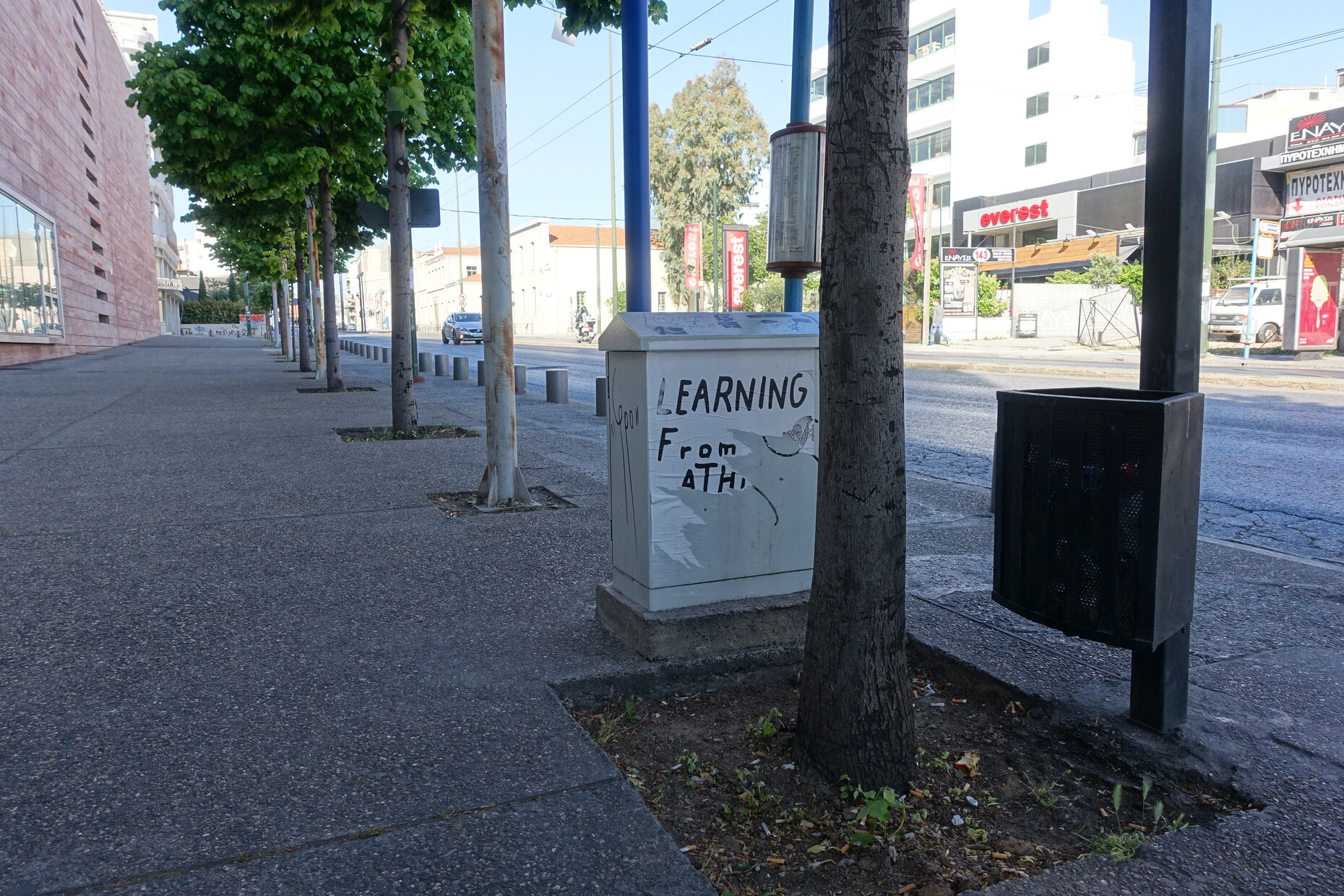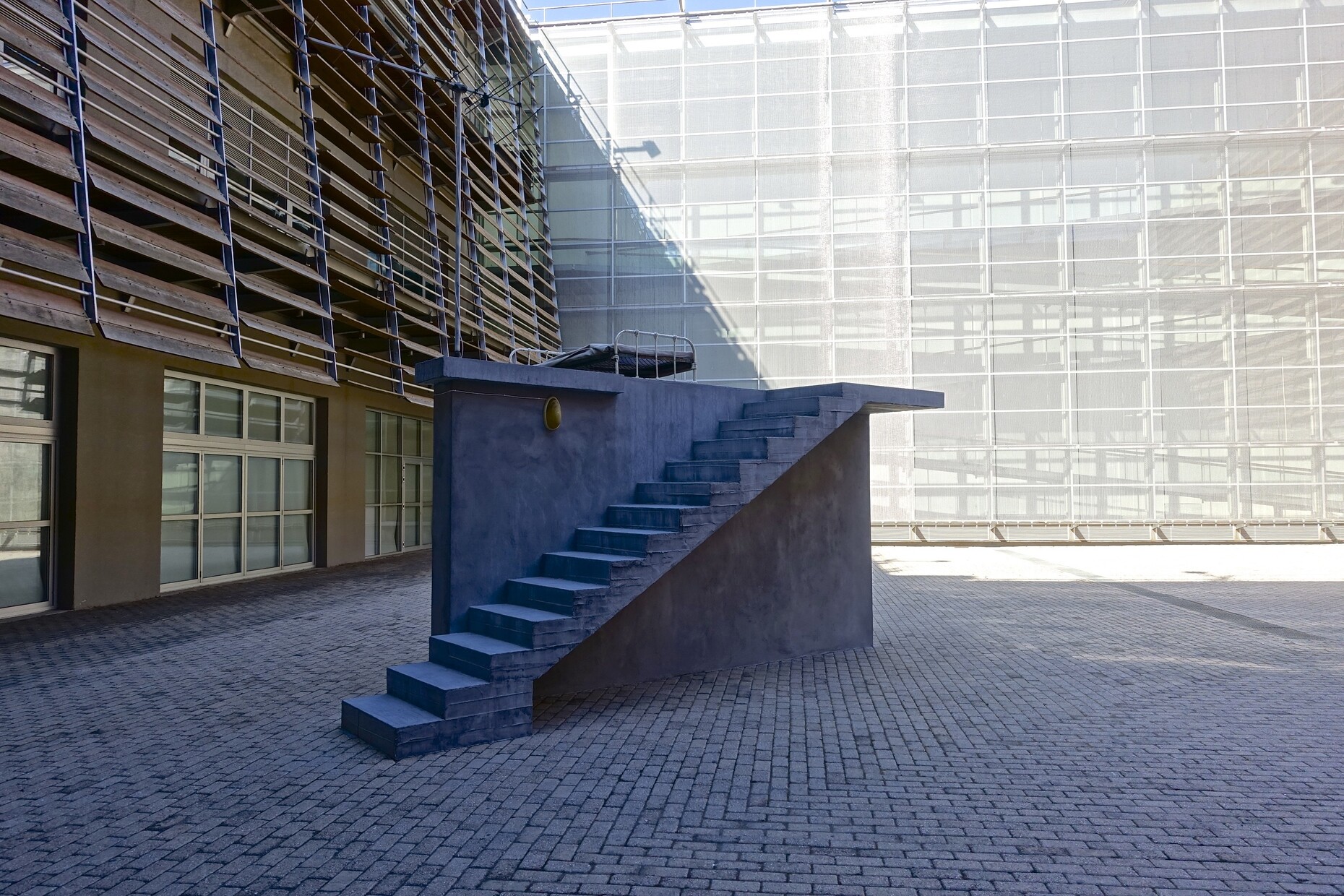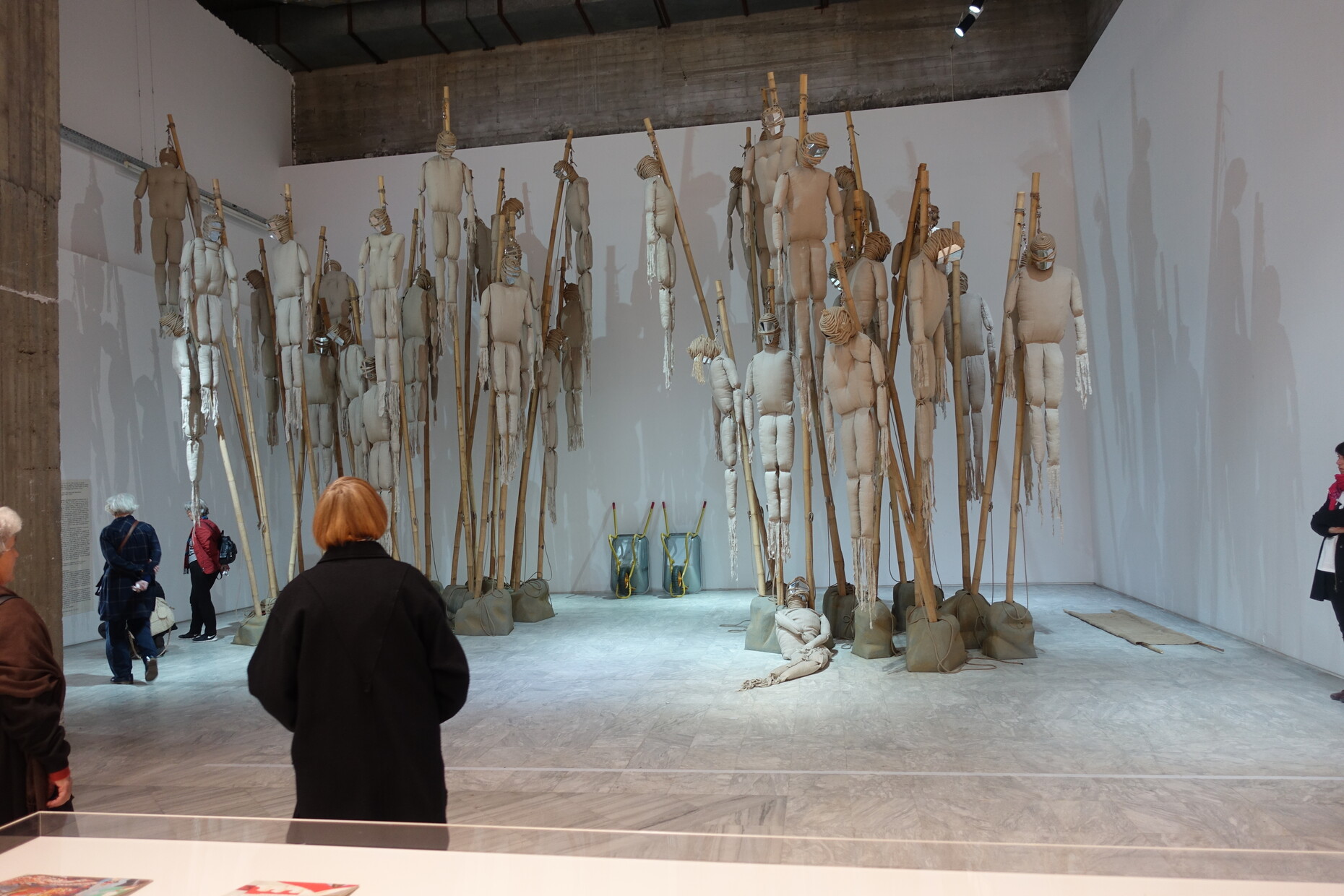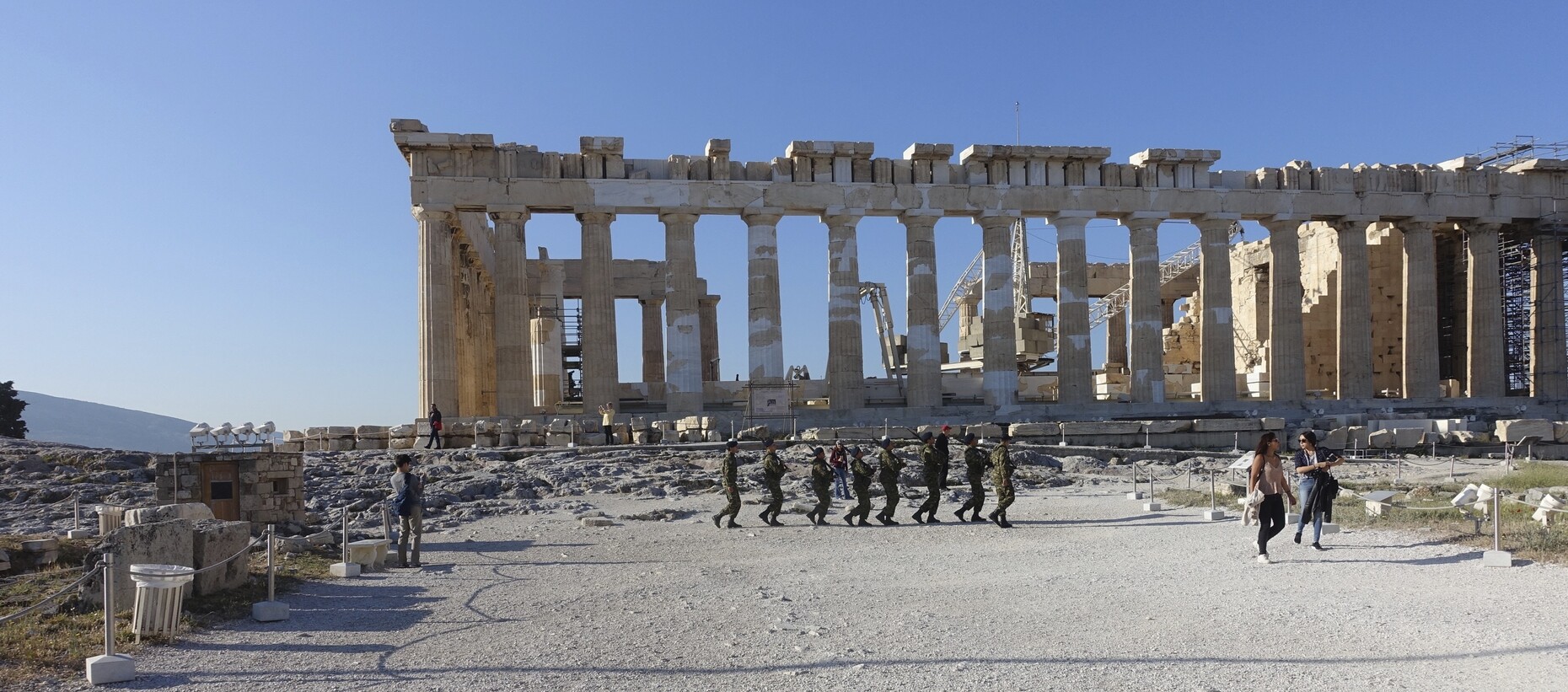Ruinous relationships
”The less we are free to decide who we are or to live as we like, the more we try to put up a front, to hide the facts, and to play roles.“
In the conservatory in Athens. A large room made of coarse concrete, with ascending flights of seats and no windows. A song is played, and in the bright colors of profits, losses and stability a ticker display with current stock market prices from round the world. “The Way Earthly Things Are Going” is the name Nigerian-born Emeka Ogboh has given his work. He delved in the archives for information on the various financial crises from 1929 to the present and then had a Greek and an Igbo composer produce the soundtrack. The songs tell the story of people, the capital markets do not care less. The gesture of “this is the way it is” is something Ogboh dissolves in a close and yet likewise remote place of melancholy imagination, where image and sound meld. One floor higher up, in “Pre-Image (Blind as the Mother Tongue)” homeless Kurd Hiwa K balances a rod on his forehead to which various mirrors are fastened while he walks across the countryside and says that his feet never stand still.
Searching for the documenta in Athens
Athens, end of April. The sound of the song that the choir of curators and artists sang at the press conference has petered out, the stage long since empty. Everyday life has returned, for the documenta, too. The preview days have passed, the media masses departed, the first reviews written, salutes or warning shots fired. The traveling entourage of Adam Szymczyk has packed its bags and moved on; after all, the next coup needs to be prepared – in early June in Kassel.
Anyone who has set off of late for such purportedly so remote parts as the Greek capital, which in the opinion of Adam Szymczyk, Artistic Director of the 14th Documenta is such a prime specimen that he had what is the world’s largest and still most important art exhibition (against all conventions) kick off in Athens (rather than all the others, which took place in Kassel, bar the one or other platform, satellite or discussion) – will find themselves abandoned. Perhaps the idea is to kindle a sense of being strangely foreign, something very close to Szymczyk’s heart. Not that this really works, of course, as the Athenians are firstly damn hospitable and secondly long since accustomed to tourists.
I manage, using a map, to find the contact desk and office the Website states mentions, but there’s only a bell and a door, and clearly nobody home. Never mind, I think, such big events often have organizational teething troubles. Thankfully, the vacated office is not far from the National Archeological Museum, where, or so I had read, a documenta piece by Daniel Knorr was to be found. Signage? Nope. But the museum certainly rewards you in other ways. From the first hall, that gold mask gleams a welcome: the one that German archaeologist, and the man who dug a shaft right through Troy, Heinrich Schliemann, discovered in 1876 on Mykene and which is said to represent the legendary King Agamemnon, the Nestor of the Trojan War on the Greek side. In the halls there are countless marvelous archaic female statues and kouroi, richly decorated vases and bowls, and even the imposing, larger-than-life bronze statue of Poseidon or Zeus from the bottom of the sea off Cape Artemision, attributed to the sculptor Kalamis and made probably in 460 BCE. Here, the Ancient Greeks rule, and their works, highlights of ancient art, leave you stunned with their physical presence and sculpted precision.
A tour of this ancient parliament of bodies, stances, myths and the history of the gods and man it would be pretty easy to simply forget the Documenta. So where was it again? At the main exit we ask, and are given a tip. And what do you know: On the way down to the basement, between signs pointing to special exhibitions, the café, the museum shop and the toilets, there’s small sign banged together from coarse plywood. It still takes a bit of hunting round the basement until an the edge of the inner courtyard and beneath the staircase you find a small display case. It includes among other things a US passport, an open book, the body of a doll, all of it garbage. Ostensibly Daniel Knorr turns it into art. Nothing of this to be seen. Only later, in the conservatory, does one come across a recycling installation where found objects are turned into artist’s books. The ancient statues take absolutely no notice of Knorr’s small stockpile of raw materials just as do the tourists who visit the museum.
Where’s Athens again?
Athens is in the present but also in the past. Alongside the city, the documenta has taken the refugee as the prime figure of the present day, who not rarely when seeking a new home has to endure a veritable Odyssey. Homer called this a “polytropus”, a man thrown about on countless paths and detours, subjected to countless trials and tribulations. The basic question of the Odyssey, namely what life could be like after the Trojan War, is not so remote as one might think from the complex of questions relating to a return home to a new life beyond capitalist cycles, externally imposed debt crises and financial manipulations that spurs the current documenta on.
Strangely, Odysseus does not pop up, although that much-traveled hero embodies that agility required to spawn practical solutions. The very least one could say of the majority of works on show in Athens is that they lack that agility Odysseus so clearly symbolizes. That agility may mean you arrive at your destination late, but along the way you gain extensive experience. And one misses precisely that in the polyphonic Athenian artistic polis. There’s no confrontation or negotiation with the powers that be about our own future(s).
Indeed, the return to the embodied propagated under the heading of the “parliament of bodies” proves to be an illusion – the common visitor will not witness any of the performances in the supporting program. If, for example, you walk between the excavated foundations of the walls of the ancient Lykeion then you will come across a sound installation by Postcommodity. Military loudspeakers have been installed at the excavation site, their function as a means of disciplining people subverted. The loudspeakers transmit stories about expulsion and the necessity to travel, some of them sung, others purely by silence. However, it is only the technical apparatus that tells them. Even the song that suddenly resounds, rising up from a human body and granting it a dignity of its own – is canned here.
Odysseus’s intelligence and ingenuity was never abstract. Here, though, true sensation and the feeling that will change everything is sought in the wrong place. Instead of exploring possibilities for actually relieving the burden of problems, D14 prefers to preach a unilateral view of the world and looks at human woes and concerns with the bonhomie of a welfare hotline.
In the National Museum of Contemporary Arts, the EMST, there are masks by Beau Dick, whose name in Kwakw’ala means “great, powerful whale” and whose masks in his people’s rituals embody creatures. Here, one can also view Piotr Uklański’s installation “The Greek Way” with 32 silver gelatin prints of photographs by Leni Riefenstahl and Naeem Mohaiemen’s video “Tripoli Cancelled” as a full-length movie – it is based on the experiences by the artist’s father who once got stuck at the old Athens Ellinikon international airport Eero Saarinnen designed.
Athens is not Las Vegas
Learning from Athens is completely unlike learning from Las Vegas. When in 1972 Robert Venturi teamed up with his office colleagues Denise Scott Brown and Steven Izenour and published “Learning from Las Vegas”, it was not only clear that under the perceptual conditions changed by the automobile a signboard saying “Casino” is more important than well-designed building frontage. Las Vegas also showed something about the taste of the lowbrow strata of society, for whom neon ads and the fitting architecture essentially constituted current architecture. Was the façade of the cathedral of Amiens not just as much one large ad billboard as the street frontage of the Golden Nugget Casino? Learning from Las Vegas also meant realizing just how much high and low culture are mutually dependent, and revealed a fundamental change in our approach to history.
Post-modernism arrived at clear conclusions when faced by the end of bourgeois taste. “Learning from Athens” by contrast remains merely a provocative slogan. What the ongoing advanced commercialization of the city, the land it stands on, its buildings and its plazas means for perception today and thus also for art, was not on the documenta agenda. Instead Szymczyk adopts the posture of uber-artist and simply declares Athens to be that specimen location from whose maltreated body one can supposedly judge the state of the present day.
Moreover, there are overtly political and pseudo-political pieces on show (many of which are not more than dogmatic politico-kitsch), with the idea being to form them into a choir that raises up its polyphonic voice to bemoan the state of the world. And on the periphery any number of apparently original symbols, masks and rituals, often derived from indigenous and local identities are presented as forms of aesthetic and political participation in order to construct a counterweight to global power relationships that are construed as fatally abstract and intangible. There is a wish to turn to the real without in the process stumbling into the trap of direct representation: Silence as resistance, masks as resistance. Things are not more differentiated simply by placing a few important historical works and rediscoveries in-between them.
Learning from Athens?
As regards the city itself, one could have equally well cast an artistic eye over Caracas or Duisburg to visualize those wounds that global financial capitalism has cut in the built and social body. The relocation or expansion of the Documenta to Athens, is exciting all the same, especially as once there you find little of what the Greek metropolis is said to be particularly in Germany, namely chaos and unemployment, notorious lassitude and aggressive street crime. No, the provocation that the launch in Athens was meant to be swiftly dissipates as it simply uses Athens, albeit from another angle, to confirm the organizers’ view of the world.
Nevertheless, the change of scene highlights the need (and this would never have been possible in Kassel) to grasp the South, however blunt this may sound, as a different kind of mindset. Only thus can one really gauge and take seriously the disappointment and anger that has gradually mounted here, and which that conservative mantra on Greece as the birthplace of democracy simply scornfully derides. The documenta’s mistake is not that it starts in Athens, but that it does not take its own credo of “Learning from Athens” seriously enough.
The view of the future is simply different in Athens. Even downtown, right next to the showrooms and flagship stores of the global brands, there are countless vacant buildings; graffiti is often the only decoration, and not just round the Acropolis will you mostly see are ruins. When Aristide Antonas, Professor of Architectural Design and Theory at the University of Thessaly and one of the D14 artists, asserts that in Athens one finds the simultaneous crystallization of “the theory of Western predominance, the disillusioning of idealism, the end of logocentrism, the deconstruction and (qua culmination point of recent Athenian history/ies) the postdemocratic construction of the hegemonic and thus the brutality with which the subaltern is accepted as normality or as the inevitability of human existence” (in: South as a state of mind, Documenta Issue #1), he may sleekly copy&paste from various current theories, but he does put his finger on a difficulty. One reason for the rigid and brutal approach taken by that predominance can, he thinks, be deduced from the rejection of Classical Greece (albeit an idealized version), as this hinges on the insight that the present appears invariable to the extent that the potential has disappeared for devising alternative future scenarios. Thus he views the “collapsed materiality of the city as a confused, indecipherable puzzle”, in whose “materiality” we can read a kind of prophesy” attesting to Europe’s devastating and yet heroic fall.”
Hiwa K has placed his “One Room Apartment” in the inner courtyard of the Benaki Museums on Pireos Street. It is not more than a staircase that leads to a bed which hovers unprotected in emptiness. Here the charcoal drawings of a Miriam Kahn, oscillating between realism and magic, and the narrative paintings of a Nilima Sheikh, where figurative forms of representations such as miniatures and painted scarfs, popular tales and themes from illustrated colonial era manuals create a cartography of the pain, suffering and violence that prevail in the Kashmir Valley and overwhelm its inhabitants.
Learning from Athens
There is a glaring discrepancy here between the critical standard set and the works shown. What is supposed to be demonstrated taking the example of Athens is only echoed vacuously by the art. Artistic quality, or so Adam Szymcyk said at an early date, is no category in his eyes. He wishes instead to break the dominance of the visual. For which reason alone D14 is no longer interested in the art in art. The wish to be political at all cost often enough ends up being well-meant and nothing more. Pieces such as Beuys’ “7000 Oaks”, which changed Kassel in the long term and used artistic means to change perspectives, are nowhere to be seen here. The desire to show what is generally going wrong thus leads to some nebulous political blurring, where art becomes only accusation, sentimental history and individual commentary. Instead of construing crisis as a form, in the parliament of opinions it becomes the impotent objection to an imperfect world. It would also seem that Adam Szymcyk is consciously trying to provoke a radical break with the prior history of the Documenta. Meaning he simply does what he accuses the present day of doing: Forgetting his own roots and history, and bowing down instead to a hardly tangible and seemingly unassailable hegemony.
